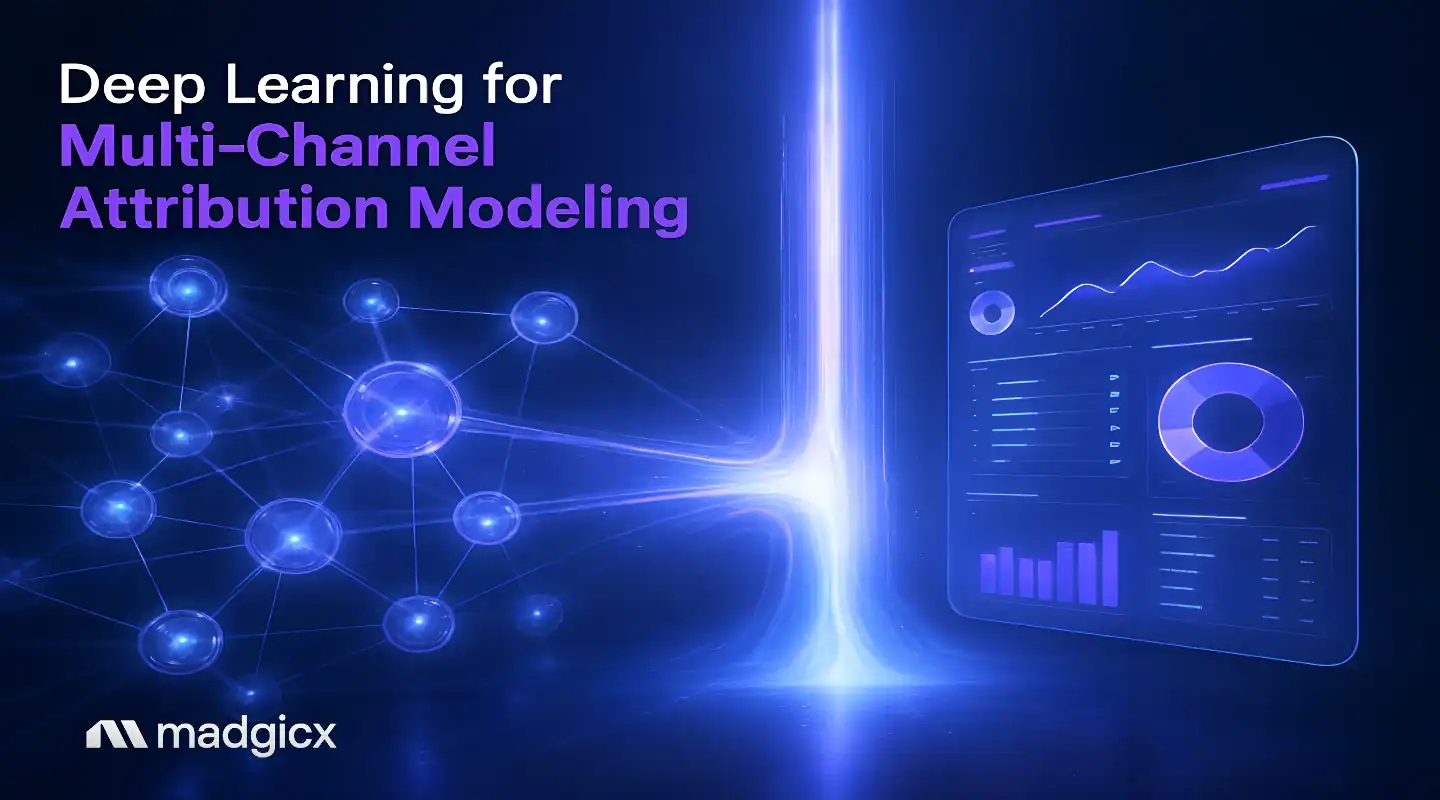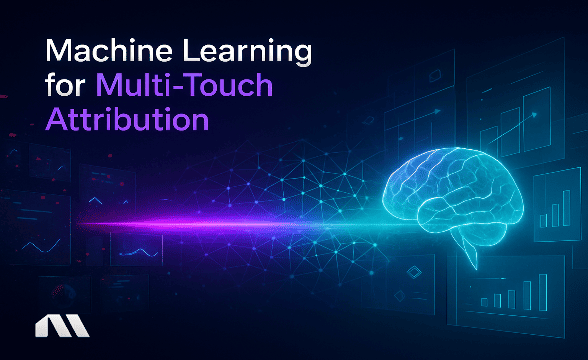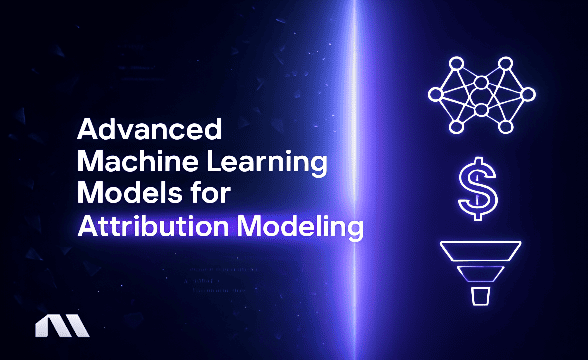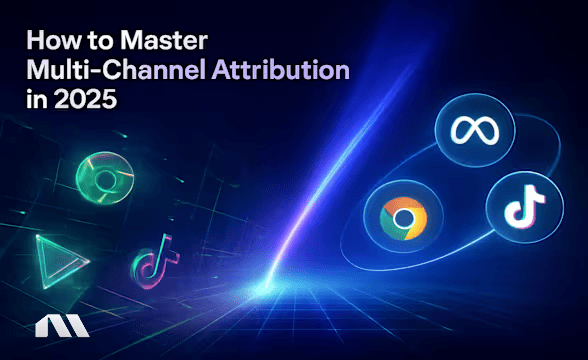Learn how deep learning for multi-channel attribution modeling uses LSTM neural networks to achieve 87.9% accuracy vs 80% traditional methods.
You're optimizing a Facebook campaign that shows 4.2x ROAS in Ads Manager, but your Google Analytics attributes the same conversions to organic search. Meanwhile, your email platform claims credit for 60% of those sales.
Sound familiar?
If you're nodding your head right now, you're experiencing the attribution accuracy crisis that's plaguing performance marketers everywhere. We've all been there - staring at conflicting reports, wondering which channel actually deserves credit for that conversion, and making budget decisions based on what feels like educated guesswork.
Here's the thing: Deep learning for multi-channel attribution modeling uses neural networks, specifically LSTM architectures with attention mechanisms, to analyze customer journey touchpoints and assign more accurate conversion credit. The DNAMTA model demonstrates 81.9% accuracy versus 76.5% for traditional last-touch attribution, capturing complex channel interactions that rule-based models completely miss.
But here's what should really get your attention - only 31% of marketing professionals are confident in their attribution accuracy, while 84% believe marketing impacts revenue but only 60% can prove ROI. With the AI marketing market hitting $40B by 2025, advanced attribution isn't just nice to have anymore - it's becoming a competitive necessity.
What You'll Learn
- How LSTM neural networks capture sequential customer journey patterns traditional models miss
- Why attention mechanisms identify the most influential touchpoints at each journey stage
- Step-by-step implementation guide from data collection to model deployment
- Real performance comparisons: 87.9% AUC vs 80% last-touch attribution accuracy from research studies
- Bonus: Platform integration strategies for Facebook Ads, Google Ads, and email marketing
The Attribution Accuracy Crisis
Every performance marketer has been there - staring at conflicting attribution reports from different platforms, each claiming credit for the same conversion. It's like watching three different witnesses describe the same accident with completely different stories.
Traditional attribution models are fundamentally limited because they oversimplify how customers actually behave. Let me break down the usual suspects:
Last-touch attribution credits 100% of conversion value to the final touchpoint before purchase. It's like giving all the credit for a touchdown to the player who crosses the goal line, ignoring the entire team that got the ball down the field.
First-touch attribution assigns all credit to the initial customer interaction. This is equally limiting - imagine crediting your entire relationship to the first "hello" you exchanged.
Linear attribution distributes credit equally across all touchpoints. Better than the others, but it assumes every interaction has the same impact, which we know isn't true.
The real problem? These models create platform conflicts showing 20-40% discrepancies in conversion reporting, leading to massive budget misallocation and missed optimization opportunities.
When your Facebook ads show one story and your email platform tells another, how do you know where to invest your next dollar?
How Deep Learning Transforms Attribution Modeling
Now here's where things get interesting. Deep learning for multi-channel attribution modeling applies neural networks to customer journey data, learning complex patterns between touchpoints and conversions that traditional rule-based models simply cannot capture.
Think of it this way: traditional attribution is like following a recipe, while deep learning attribution is like having a master chef who understands how ingredients interact in ways that can't be written down in simple rules.
Core Components Explained
LSTM (Long Short-Term Memory) processes sequential touchpoint data, remembering important information across long customer journeys. Unlike traditional models that treat each touchpoint in isolation, LSTMs understand that a webinar attended three weeks ago might be more influential than yesterday's display ad view.
Attention Mechanism calculates importance weights for each touchpoint, identifying which interactions matter most for specific conversion outcomes. It's like having a spotlight that automatically highlights the most influential moments in each customer's journey.
Temporal Decay accounts for time-based influence, where recent touchpoints typically have greater impact than older ones. But here's the clever part - the model learns when this rule should be broken (like when that early webinar was actually the key decision driver).
Pro Tip: Think of the attention mechanism like a really smart analyst who can instantly spot patterns across thousands of customer journeys that would take humans months to identify.
The beauty of this approach is that it doesn't just follow predetermined rules - it discovers the actual patterns in your data. For server-side tracking AI implementations, this means capturing attribution insights that traditional pixel-based tracking completely misses.
Madgicx’s server-side tracking gives advertisers back the visibility lost to cookies and browser limitations. By sending event data directly from your server to ad platforms, it restores true attribution accuracy and powers smarter optimization. The result is clean, reliable insights you can actually trust for every conversion. Try Madgicx for a week for free.
The DNAMTA Model Architecture
Adobe Research developed their DNAMTA (Deep Neural Attention Multi-Touch Attribution) model with impressive results. Let me walk you through how this system works.
Model Flow
- Input Layer: Customer journey sequences including touchpoint type, timing, and context data
- Embedding Layer: Converts categorical data (like "Facebook video ad" or "email click") into dense numerical representations the neural network can process
- LSTM Layer: Processes sequential patterns with 64-dimension hidden states, maintaining memory of important interactions across the entire journey
- Attention Layer: Calculates touchpoint importance using 64-dimension attention vectors - this is where the magic happens
- Time Decay Integration: Applies temporal weighting to recent vs. distant touchpoints based on learned patterns
- Classification Layer: Predicts conversion probability and assigns fractional attribution credit
Performance Results
- DNAMTA Fusion: 81.9% accuracy, 87.9% AUC
- Last-touch baseline: 76.5% accuracy, 80.0% AUC
- Improvement: 7% accuracy gain, 9.9% AUC improvement
But here's what really matters for your campaigns: Adobe's analysis of 426,853 customer journeys revealed that display contributed 41.1%, email 37.2%, and paid search 21.7% using fractional attribution. Last-touch attribution showed completely different allocations, massively undervaluing display and email touchpoints.
This isn't just academic theory - it's revealing that traditional attribution is systematically misallocating millions in ad spend. When you're optimizing based on last-touch data, you're essentially flying blind.
For performance marketers working with first-party data AI strategies, these insights become even more powerful because you can capture the full customer journey across owned channels.
Implementation Strategy for Performance Marketers
Alright, let's get practical. Implementing deep learning for multi-channel attribution modeling isn't something you do over a weekend, but it's absolutely achievable with the right approach.
Here's your roadmap:
Phase 1: Data Infrastructure (Month 1)
Start with comprehensive tracking across all channels. You need Facebook Pixel, Conversions API, Google Analytics 4, and email platform webhooks all feeding into a centralized data warehouse. The minimum dataset for reliable training is 10,000+ conversion paths, though you'll see better results with 50,000+.
Data quality is everything here. Clean out bot traffic, establish proper attribution windows (I recommend 7-day click, 1-day view as a starting point), and ensure consistent user identification across platforms.
Without clean data, even the smartest neural network will give you garbage insights.
Phase 2: Model Development (Month 2)
Your technical stack needs TensorFlow or PyTorch, with minimum 8GB GPU memory for training (16GB+ for large datasets). Cloud platforms like AWS or GCP offer cost-effective training with P3 or T4 instances.
The training process involves an 80/20 train/validation split, early stopping to prevent overfitting, and hyperparameter optimization. Most importantly, validate your model against holdout data and compare results against platform attribution to ensure you're actually improving accuracy.
Phase 3: Integration & Optimization (Month 3)
Build dashboards that visualize attribution scores, track channel performance, and calculate ROI based on your new insights. The real value comes from automated budget reallocation based on attribution insights and A/B testing to compare deep learning vs. traditional attribution impact on campaign performance.
Pro Tip: Start with single platform implementation (Facebook) before expanding to multi-channel. This reduces complexity while you're learning the system.
For machine learning for cross-platform advertising, this phased approach ensures you're building on solid foundations rather than trying to boil the ocean all at once.
Platform-Specific Integration Guide
Each platform has its quirks, so let me break down the integration specifics:
Facebook/Instagram Ads
Set up Conversions API for server-side tracking - this is crucial for iOS 14.5+ compliance. Compare your custom attribution windows (7-day click, 1-day view) against deep learning recommendations.
You'll often find that video ads and carousel formats drive different journey stages than static images.
Google Ads Integration
Implement enhanced conversions for better cross-platform journey tracking. The key insight here is understanding how search vs. display attribution patterns differ - search often gets last-touch credit when display ads did the heavy lifting earlier in the journey.
Email Marketing
Configure webhooks for real-time attribution data. You'll discover that welcome series emails often initiate journeys that convert through other channels, while promotional campaigns get unfair last-touch credit.
Segment your lists based on attribution insights for much better targeting.
The integration with cross-platform optimization strategies becomes powerful when you can see how channels work together rather than competing for credit.
ROI Impact and Case Studies
Let's talk numbers that actually matter to your bottom line. The performance improvements from deep learning for multi-channel attribution modeling aren't just theoretical - they translate directly to better ROI.
Quantified Business Results
An e-commerce company achieved 44% spend reduction while maintaining revenue after implementing multi-touch attribution. They discovered that their retargeting campaigns were getting zero credit under last-touch attribution, despite being crucial for conversion.
A B2B SaaS company saw 47% pipeline increase after discovering that webinars initiated 40% of their successful customer journeys. They'd been underinvesting in webinar promotion because the conversions were attributed to later email touches.
Performance marketing agencies report 25% ROI improvement through attribution-driven budget reallocation. The key insight? They found undervalued channels like case study downloads and retargeting campaigns that were driving conversions but getting no credit.
Attribution Insights That Drive Action
The most valuable discoveries often involve undervalued channels. Webinars, case studies, and retargeting campaigns frequently drive conversions that get attributed to overvalued touchpoints like last-click brand searches and direct traffic.
Optimal journey patterns vary by business model: 3-5 touchpoints for B2C, 7-12 for B2B. But the specific sequence matters more than the count. A webinar followed by case study download followed by demo request shows much higher conversion probability than random touchpoint combinations.
Time Decay Patterns
Recent exposures contribute 3-4x more than weeks-old touchpoints, but the model learns when to break this rule. Sometimes that early educational content is the real conversion driver, even if it happened months ago.
Pro Tip: Look for patterns where educational content (webinars, whitepapers) early in the journey drives conversions attributed to later promotional touchpoints. This is where you'll find your biggest budget reallocation opportunities.
Advanced Optimization Strategies
Once you've got the basics running, here's how to take your attribution modeling to the next level:
Model Refinement
Implement incremental learning so you can update models without full retraining. This saves computational resources while keeping your attribution current. Factor in external variables like seasonality, competitor actions, and economic conditions that affect customer behavior.
Balance attribution accuracy with computational efficiency through multi-objective optimization. Sometimes a slightly less accurate model that runs in real-time is more valuable than a perfect model that takes hours to process.
Privacy-Compliant Implementation
Focus on first-party data enrichment strategies and server-side tracking for iOS 14.5+ compliance. Implement cookieless attribution using probabilistic matching - this is becoming essential as third-party cookies disappear.
Scaling Considerations
For agencies managing multiple brands, develop multi-brand attribution across portfolios. Cross-device journey modeling becomes crucial as customers switch between mobile, desktop, and tablet throughout their journey.
Decide between real-time vs. batch processing based on your optimization needs. Real-time attribution enables immediate budget shifts, while batch processing allows for more sophisticated analysis.
The integration with multi-touch attribution AI strategies ensures you're building scalable systems that grow with your business.
Frequently Asked Questions
What minimum dataset size is needed for LSTM attribution models to outperform traditional methods?
Research shows 10,000+ conversion paths provide reliable training, though 50,000+ paths enable more sophisticated attention mechanisms. Start with 3-6 months of comprehensive tracking data across all your marketing channels.
How frequently should deep learning attribution models be retrained?
Monthly retraining captures evolving customer behavior while avoiding overfitting to recent patterns. Use incremental learning for weekly updates without full model rebuilding - this keeps your attribution current without massive computational costs.
What computational resources are required for training attribution models?
Minimum 8GB GPU memory for training, 16GB+ for large datasets. Cloud platforms like AWS/GCP offer cost-effective training with P3/T4 instances. The good news is that inference requires minimal resources once your model is trained.
How do deep learning models handle missing touchpoint data or incomplete journeys?
LSTM architectures naturally handle variable-length sequences. Use padding for consistent input shapes and attention masking to ignore missing touchpoints during training. This makes the models robust to real-world data imperfections.
Can deep learning attribution integrate offline touchpoints like store visits?
Yes, through probabilistic matching using customer identifiers, location data, and temporal patterns. Requires additional data preprocessing but significantly improves attribution accuracy for omnichannel brands.
Transform Your Attribution Strategy with Deep Learning
Deep learning for multi-channel attribution modeling represents the evolution from guesswork to precision in marketing measurement. The DNAMTA model's 87.9% AUC demonstrates that neural networks can capture customer journey complexity that traditional models miss entirely.
Key Takeaways
- LSTM attention models demonstrate 7-9% accuracy improvements over last-touch attribution
- Real-world implementations drive 25-47% ROI increases through better budget allocation
- Attention mechanisms reveal undervalued channels and touchpoints for optimization
- Implementation requires systematic approach: data infrastructure → model training → platform integration
Your Next Step
Start with comprehensive tracking infrastructure across all marketing channels. While building custom deep learning models requires significant technical investment, platforms like Madgicx provide attribution tools designed to improve insights without the complexity.
The future of performance marketing belongs to those who can accurately measure and optimize based on true channel value. Deep learning for multi-channel attribution modeling isn't just an upgrade - it's becoming the competitive standard.
The question isn't whether you'll implement advanced attribution, but whether you'll do it before or after your competitors gain the advantage.
For machine learning models using attribution data, the systematic approach outlined here provides the foundation for building attribution systems that actually improve your marketing ROI rather than just providing more complex reports.
Get clearer insights into which channels drive conversions with Madgicx's server-side tracking, which uses advanced machine learning to help improve attribution insights across Facebook, Instagram, and other channels - designed to improve attribution accuracy for performance marketers.
Digital copywriter with a passion for sculpting words that resonate in a digital age.







.avif)







